
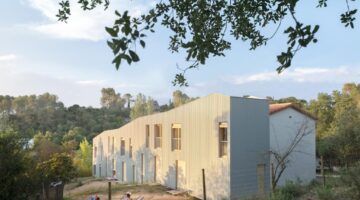
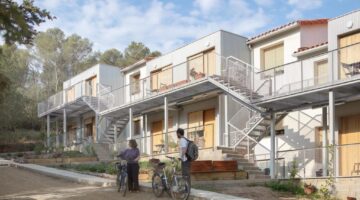
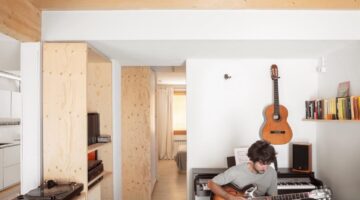

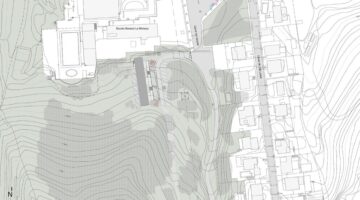
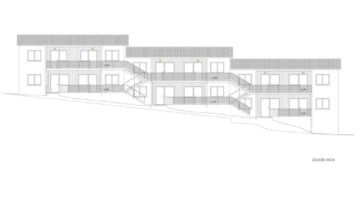
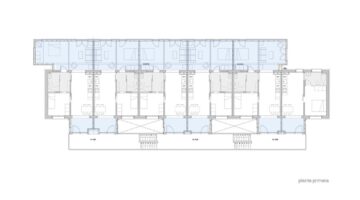
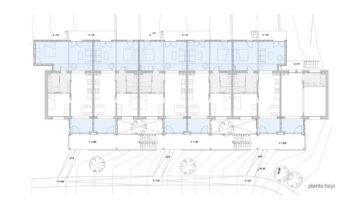
La Casa dels mestres, Barcelona
Main objectives of the project
Barcelona faces a challenging housing situation marked by high demand and limited affordable options, prompting innovative solutions to address the crisis. Amidst this backdrop, the city has witnessed a powerful cooperative movement dedicated to providing sustainable and inclusive housing alternatives. This movement emphasizes community participation, sustainability, and affordability, embodying a grassroots response to the housing shortage and inspiring projects like the rehabilitation of Les Cases dels Mestres in La Floresta, which transforms disused buildings into cooperative social housing while fostering community cohesion and environmental responsibility.
Date
- 2015: En proceso
Stakeholders
- Architect: Som Hàbitat
- Architect: Zaga arquitectura
Location
City:
Country/Region: Barcelona, Spain
Description
In Barcelona, adjacent to La Floresta School and bordering the wooded mass of Parc de Collserola, stands a building originally constructed to house the school's teachers. This place, known locally as Les Cases dels Mestres, was built in 1969 as part of a typical low-cost housing development. The buildings, characterized by their simplicity and unpretentious design, featured traditional language, short structural bays, and cost-effective construction methods. Over time, the houses fell into disuse, though they remained a significant part of the community's memory. Recently, a neighborhood movement succeeded in rehabilitating the structure for use as cooperative social housing.
The process begins with the occupation of the houses in 2014 and, after a long negotiation with the authorities, in 2015 the construction of the building is allowed. The temporary cession of use of the site for the cooperative is used. After the time indicated in the agreement, housing and land will pass into municipal hands as social housing.
The refurbishment project aims to adapt the building for cooperative social housing while preserving its original identity and ensuring flexibility in the configuration of the units. The proposal includes adding two new bays on each long façade, complementing the original structure. These additions address shortcomings in accessibility, room size, flexibility of use, and energy efficiency of the roof and façades. The first new wing, on the east façade, features walkways and stairs that adapt to the steep terrain, guiding users to each house's door. This façade incorporates layers that reveal the building's history and add new dimensions, while the access walkways serve as terraces for communal living, offering views of the natural surroundings.
The western bay, more private, increases the size and height of the dwellings, creating 11 units plus a communal space. This façade interacts uniquely with the landscape, allowing windows to cascade downhill and enhancing the relationship between residents and the environment. The refurbished dwellings maintain the spirit of the original structure, improve habitability and versatility, and foster a closer connection between residents and the surrounding nature.
From its inception, this project has emphasized essential values such as:
Participation and inclusion. The project's usual work process was significantly altered, placing the user in a central role during conception and construction. Residents actively participated in decision-making, and workshops during the design phase allowed them to choose from various distribution options, ensuring homes suited to different family units with adequate flexibility.
Self-build. During construction, users contributed labor through training workshops, handling interior refurbishment tasks. This approach reduced construction costs and increased residents' identification with their new homes.
Sustainability. A key principle was creating a sustainable building with a low carbon footprint. This involved using local, non-polluting materials, a prefabricated timber-framed structure, high insulation, and efficient collective installations such as a central pellet boiler and a grey and rainwater recovery system.
Refurbishment and collective memory. The project revitalized a disused and abandoned building, reinforcing collective memory and community cohesion by demonstrating its viability.
Well-being and contact with nature. Leveraging the building’s exceptional location, the project created private and collective spaces that balance community activities with personal relaxation, all in direct contact with the surrounding natural environment.

